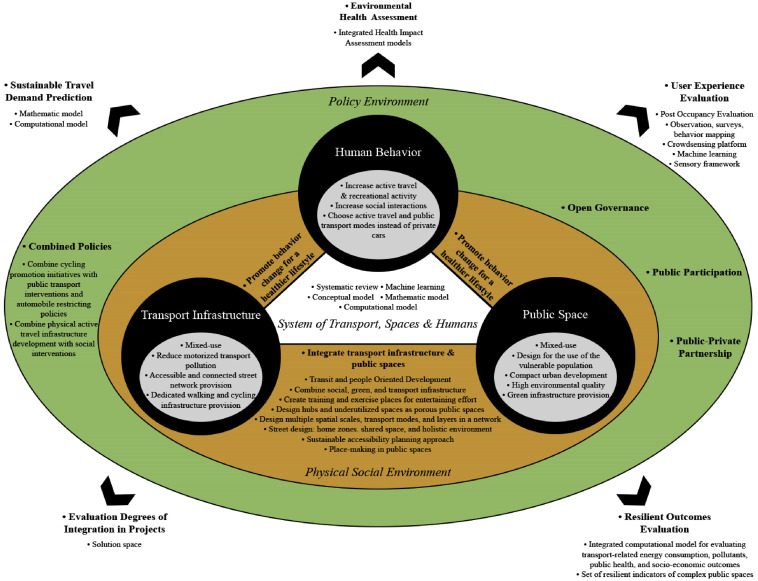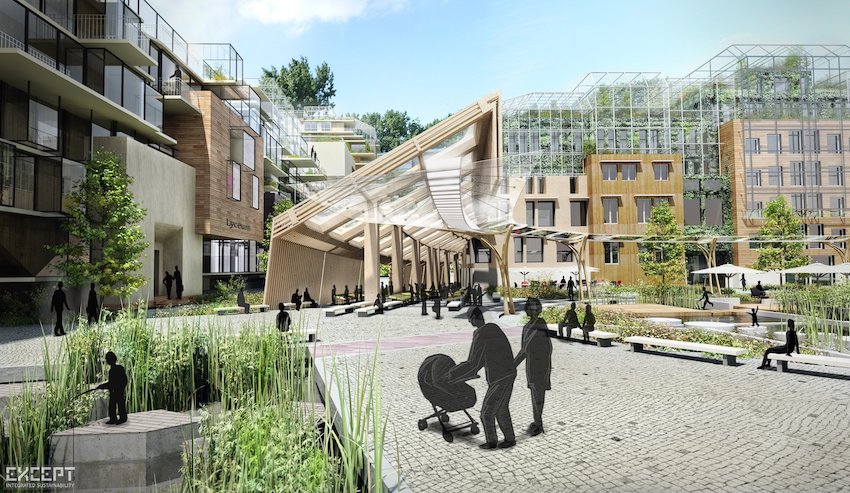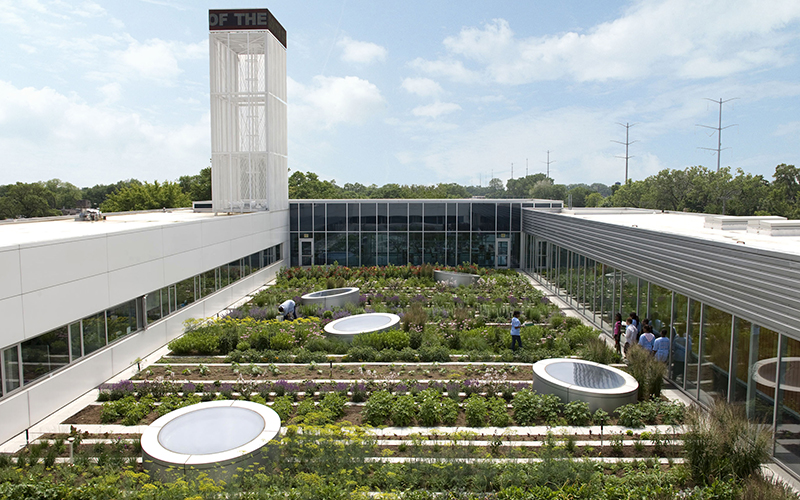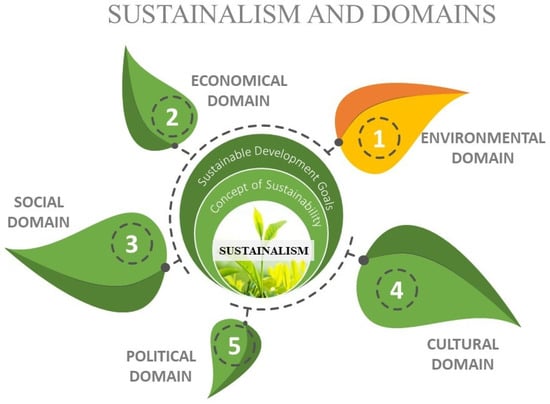Integrating Biophilic Design in Public Transportation Projects.
Incorporating **biophilic design** into public transportation projects is fundamentally transforming urban navigation.
This approach significantly enhances the **passenger experience**, promotes **mental and physical well-being**, boosts **productivity**, and fosters **sustainability**.
By integrating natural elements such as **light**, **greenery**, and **water features** into transit systems, it is possible to explore inspiring case studies while also examining the challenges associated with these innovative designs.
It is crucial to understand why **biophilic design** is essential for the future of public transportation.
Why Is Biophilic Design Important in Public Transportation Projects?
.jpg_00.jpeg)
Biophilic Design is instrumental in shaping Public Transportation Projects by enhancing the Commuter Experience through the integration of natural elements, green spaces, and nature connectivity. This approach not only improves the aesthetics of transit environments but also contributes positively to Community Well-being, promotes ecological benefits, and encourages sustainable urban planning.
When effectively implemented, Biophilic Design can significantly influence passenger interactions with transit systems, fostering a connection to nature that enhances mental health and aligns with principles of environmental psychology and urban ecology.
Moreover, these design strategies are essential for creating environments that prioritize passenger comfort, accessibility, and safety, while simultaneously enriching urban biodiversity, promoting favorable ecological design outcomes, and enhancing city landscapes.
1. Improves Passenger Experience
Integrating biophilic design into public transportation systems significantly enhances passenger comfort and user experience by incorporating green spaces, natural elements, and nature-inspired materials, thereby creating a more inviting and aesthetically pleasing environment.
These design principles advocate for the inclusion of outdoor seating areas where travelers can relax amidst greenery while awaiting their rides. Additionally, the incorporation of large windows facilitates ample natural light, improving light and air quality, which not only enhances visibility but also positively influences mood and well-being.
Furthermore, careful attention to soundscapes and visual connections can transform an otherwise hectic atmosphere into a more tranquil experience, employing soothing sounds of nature or gently flowing water. Such thoughtfully implemented elements collectively elevate the overall ambiance, making transit facilities not merely a means of transportation but an integral component of a pleasant journey that fosters social interaction.
2. Enhances Mental and Physical Well-being
Biophilic Design enhances both mental and physical well-being among passengers by fostering a connection with nature, which has been demonstrated to provide significant psychological benefits, including stress reduction, improved mood, and enhanced commuter satisfaction.
This concept has the potential to substantially improve the daily commuting experience by integrating natural elements such as greenery, water features, and natural lighting into public transportation infrastructure, which also supports urban heat island mitigation.
For example, transit hubs featuring vertical gardens, living walls, and public art that reflects local flora and fauna can create a calming environment that alleviates anxiety for riders. Furthermore, these elements not only enhance the aesthetic appeal of the space but also cultivate a sense of belonging and pride among commuters.
The incorporation of these biophilic elements, including adaptive reuse of spaces, promotes a more enjoyable and restorative journey, ultimately contributing to better overall health and fostering positive social interactions as individuals engage more constructively in shared spaces.
3. Increases Productivity and Creativity
The implementation of Biophilic Design in transit systems can significantly enhance both productivity and creativity. Environments that are enriched with natural elements and city resilience strategies have demonstrated a positive impact on cognitive function and overall mental performance.
Research shows that exposure to greenery, natural light, and eco-friendly materials not only elevates mood but also mitigates stress, thereby fostering a more conducive working environment. For example, public transportation hubs that feature living walls, indoor plants, and ample natural daylight are associated with increased user satisfaction and engagement.
This relationship between environmental psychology and biophilic design underscores how the incorporation of natural elements can stimulate creativity. When individuals experience a greater sense of relaxation and connection to nature, their capacity for creative thinking and problem-solving improves, ultimately promoting innovation, design innovation, and efficiency across various tasks.
4. Promotes Sustainability
The promotion of Sustainable Design principles through Biophilic Design significantly enhances the ecological impact of public transportation projects while supporting urban planning initiatives focused on fostering climate resilience, green infrastructure, and sustainable mobility solutions.
By incorporating natural elements such as greenery, water features, and natural light into transit facilities, public transportation systems can notably decrease energy consumption, enhance the public realm, and create a more welcoming environment for commuters. These biophilic strategies also promote urban biodiversity by providing habitats for local wildlife and enhancing overall air quality.
The implementation of green roofs and vertical gardens not only aids in insulating buildings—thereby reducing heat absorption, energy costs, and contributing to urban nature integration—but also plays a crucial role in stormwater management. Consequently, this comprehensive approach encourages the development of spaces that are both functional and resilient in the face of climate change challenges.
How to Incorporate Biophilic Design in Public Transportation Projects?
Incorporating Biophilic Design into public transportation projects requires a strategic approach that emphasizes the integration of natural elements through various design guidelines and transportation equity considerations.
The objective is to develop user-centric solutions that enhance both functionality, aesthetic appeal, and transportation efficiency.
1. Natural Light and Views
.jpg_01.jpeg)
Maximizing natural light and providing scenic views are essential components of biophilic design that significantly enhance the user experience in public transportation environments, offering psychological benefits such as improved mood, reduced stress, and nature immersion.
By strategically positioning transit facilities to capture sunlight and open to surrounding landscapes, urban planners can create spaces that not only feel more welcoming but also promote a sense of connection with nature and improve landscape architecture.
The integration of large windows and skylights facilitates the influx of natural light into waiting areas, thereby reducing reliance on artificial lighting. Additionally, incorporating green walls, outdoor gardens, and pedestrian pathways can further immerse passengers in a calming environment.
Facilities that embrace these design elements tend to foster a more positive transit experience, cultivating a community-oriented atmosphere that ultimately benefits both travelers and the overall urban ecosystem, supporting social sustainability.
2. Greenery and Natural Elements
Incorporating greenery and natural elements into public transportation projects is essential for promoting urban biodiversity, enhancing transportation hubs, and creating inviting outdoor amenities that resonate with passengers.
Enhancements such as vertical gardens and green roofs not only enhance aesthetic appeal but also play a critical role in improving air quality by absorbing pollutants and carbon dioxide. When integrated into train stations or bus terminals, these green installations promote biodiversity and can transform routine commutes into refreshing experiences for travelers.
Moreover, they function as community hubs, encouraging residents to connect with nature, fostering social interaction, and enhancing community engagement.
The presence of greenery cultivates a sense of pride within the community, promoting more sustainable practices, enhancing community transit, and increasing the likelihood of public transport usage. Collectively, these features contribute to the development of more vibrant and healthy urban environments.
3. Use of Natural Materials
The incorporation of natural materials in public transportation design not only enhances aesthetic appeal but also contributes to the establishment of a warm and inviting atmosphere for users, in alignment with the principles of Biophilic Design and functional aesthetics.
By integrating sustainable options such as reclaimed wood, recycled plastics, eco-friendly fabrics, and nature-based solutions, transit systems can significantly improve the user experience while simultaneously reducing their environmental impact.
These materials not only foster a sense of connection to nature, promoting relaxation and comfort during travel, but also underscore the importance of sustainability in daily life. As passengers become more attuned to their surroundings, they are likely to develop a stronger sense of community, well-being, and commuter satisfaction.
Ultimately, such deliberate choices in material selection, including adaptive reuse, contribute to a more responsible and enjoyable experience for all individuals who utilize public transportation, enhancing nature interaction.
4. Water Features
The incorporation of water features in public transportation spaces serves as a significant natural element that cultivates a calming environment while offering psychological benefits to commuters, promoting nature therapy and health benefits.
These features can encompass a variety of installations, including serene koi ponds, visually striking fountains, reflective pools, gentle brooks, and microclimates, each contributing to the aesthetic enhancement of transit facilities.
Such installations not only beautify the surroundings but also create inviting spaces for relaxation and social interaction. The integration of water features fosters community engagement, cultural relevance, and creative placemaking by attracting visitors who may linger and appreciate the ambiance, thereby revitalizing areas that are often overlooked.
The soothing sounds and visuals of water promote stress relief and overall well-being, positively impacting the daily commuting experience and enhancing the passenger experience.
Case Studies of Successful Biophilic Design in Public Transportation Projects
An examination of case studies focusing on successful biophilic design in public transportation projects provides valuable insights and practical applications.
These studies illustrate how the effective integration of nature-inspired elements can significantly enhance urban planning and improve commuter experiences.
1. Singapore’s Gardens by the Bay
Singapore’s Gardens by the Bay serves as an exemplary model of Biophilic Design effectively integrated within a public transportation framework. This initiative not only showcases urban biodiversity but also enhances the overall commuter experience with ecological benefits and environmental design.
This innovative strategy enriches the aesthetic quality of travel while fostering a seamless connection between nature and daily commuting activities. By incorporating natural elements such as living walls, green roofs, and a diverse array of plant species, the design creates an inviting oasis amidst the urban landscape, improving air quality and supporting urban ecology.
These biophilic features play a significant role in improving air quality and supporting wildlife habitats, thereby underscoring the importance of sustainable urban planning and design sustainability. Furthermore, the incorporation of open spaces encourages community interaction and cultivates a greater appreciation for biodiversity, transforming an ordinary journey into an opportunity for engagement with the natural environment and urban nature.
2. London’s Crossrail Station
.jpg_10.jpeg)
London’s Crossrail Station serves as a prime example of the application of Biophilic Design principles, focusing on user experience by emphasizing comfort, accessibility, and the incorporation of natural elements within the urban environment.
This innovative approach not only enhances the aesthetic appeal of the transportation hub but also cultivates a deeper connection between passengers and their surroundings. By integrating features such as green walls, abundant natural light, and calming water elements, the design encourages users to engage with their environment, thereby reducing stress and promoting overall well-being.
The strategic incorporation of organic materials and landscaping contributes to the creation of a serene atmosphere, transforming the station from merely a transit point into a welcoming space where individuals can pause and appreciate nature, even amidst the demands of urban life. This not only enhances user experience but also promotes nature connectivity and nature interaction.
Such thoughtful design considerations are essential in enhancing the daily commuting experience.
3. Portland’s TriMet MAX Orange Line
Portland’s TriMet MAX Orange Line serves as a prominent case study illustrating the effective integration of Biophilic Design within public transportation systems, thereby enhancing community spaces and promoting active transportation.
By incorporating natural elements such as green walls, native plant landscaping, and ample daylighting at its stations and in the surrounding areas, the Orange Line creates a harmonious connection between nature and urban life, contributing to biodiversity and ecological awareness.
This deliberate design not only encourages riders to engage more meaningfully with their environment but also fosters a sense of belonging within the community.
The inclusion of art installations and reflective water features further enriches these experiences, transforming public transit into an inviting space that supports community engagement and public realm enhancement.
Additionally, the line’s accessibility features prioritize ease of use for all commuters, cultivating a welcoming atmosphere that encourages daily utilization while deepening appreciation for the natural beauty in the vicinity through participatory design and eco-friendly materials.
Challenges and Limitations of Incorporating Biophilic Design in Public Transportation Projects
The integration of Biophilic Design in public transportation projects offers numerous advantages; however, it is essential to recognize the challenges and limitations, such as urban heat island effects and restoration ecology, that may impede its successful implementation.
These include considerations such as cost constraints, maintenance issues, and the need for adaptive reuse in existing transportation hubs.
1. Cost and Budget Constraints
Cost and budget constraints present significant challenges when integrating biophilic design into public transportation projects, often limiting the scope and quality of design implementations, which affects sustainability and resilience planning.
These financial obstacles can arise from various factors, including initial investment costs, ongoing maintenance expenses, and the necessity for specialized materials that facilitate the incorporation of natural elements within such infrastructures.
As a result, stakeholders must proactively seek innovative financing solutions, such as public-private partnerships, grants from environmental organizations, or sustainable bonds that leverage the increasing demand for green initiatives.
Furthermore, fostering stakeholder engagement is essential, as it not only ensures a diverse range of perspectives but also assists in pooling resources and expertise. Involving the community and investors can lead to the development of innovative funding mechanisms, ultimately enhancing the feasibility and impact of biophilic design in public transportation.
2. Lack of Awareness and Education
A lack of awareness and education regarding the benefits of Biophilic Design can present significant barriers to its integration in public transportation projects, emphasizing the necessity for effective public policy, cultural relevance, and community engagement.
To effectively address these challenges, stakeholders should prioritize educational initiatives targeted at both professionals and the general public.
Workshops, seminars, and community forums can offer valuable insights into the positive impacts of integrating nature into urban environments, thereby enhancing not only aesthetic appeal but also mental well-being.
Public policy can play a crucial role by supporting the development of curricula that highlight the importance of sustainable design practices.
By fostering proactive dialogue and encouraging collaboration among architects, urban planners, and community members, a more informed populace can advocate for biophilic principles, ensuring their incorporation into future transportation systems.
3. Maintenance and Upkeep
Maintenance and upkeep present ongoing challenges for public transportation projects that incorporate Biophilic Design. Careful planning is essential to ensure that biophilic elements remain functional and sustainable over time, addressing issues like noise reduction and transportation efficiency.
To effectively address these challenges, transit authorities must prioritize comprehensive maintenance strategies, which should include functional aesthetics and wayfinding elements:
- Regular inspections
- Timely repairs
- Seasonal adjustments to the biophilic components
Incorporating sustainable materials in the initial design can further enhance the longevity of these elements. Additionally, training staff on the unique requirements of biophilic design fosters a culture of care and diligence.
Engaging local communities in upkeep initiatives not only encourages stewardship but also cultivates a sense of ownership, thereby bolstering the collective commitment to maintaining these environmentally friendly installations. A proactive approach that combines innovative maintenance techniques with community involvement is crucial for preserving biophilic design within public transit systems.
Frequently Asked Questions
.jpg_11.jpeg)
1. What is biophilic design and how does it relate to public transportation projects?
Biophilic design is an approach to architecture and urban planning that seeks to connect people with nature. This includes incorporating natural elements, materials, and patterns into the built environment. Integrating biophilic design in public transportation projects aims to improve the well-being and experience of commuters by bringing aspects of nature into their daily journeys, fostering nature immersion and social sustainability.
2. How can biophilic design benefit public transportation projects?
Integrating biophilic design in public transportation projects can have numerous benefits, including reducing stress, improving air quality, increasing productivity, and promoting a sense of well-being and connection with the natural world. These benefits can lead to a more positive overall experience for commuters, fostering community health and potentially encouraging more people to use public transportation.
3. What are some examples of biophilic design in public transportation projects?
There are many ways biophilic design can be incorporated into public transportation projects. Some examples include using natural materials such as wood and stone in the interior design of stations and vehicles, incorporating green walls or living roofs, implementing natural lighting and ventilation systems, and enhancing urban green spaces through strategic landscaping.
4. Is integrating biophilic design in public transportation projects expensive?
While incorporating biophilic design elements may require initial investments, the long-term benefits can outweigh the costs. For example, natural lighting and ventilation systems can reduce energy costs, and green walls can improve air quality and reduce the need for costly air filtration systems.
5. How can biophilic design be integrated into existing public transportation projects?
Biophilic design can be incorporated into existing public transportation projects through retrofits and renovations. This can include adding natural elements such as green walls or incorporating natural lighting and ventilation systems. It can also involve incorporating biophilic design principles in future updates or expansions of public transportation systems, boosting transportation equity and user-centered design.
6. Is there research to support the effectiveness of biophilic design in public transportation projects?
Yes, numerous studies have shown the positive impact of biophilic design on human well-being and productivity. Research has also specifically examined the benefits of integrating biophilic design in public transportation projects, with results showing improved air quality, reduced stress, and increased satisfaction among commuters. Key aspects such as urban planning, sustainability, green infrastructure, and the inclusion of natural elements like indoor plants and green roofs play a significant role in enhancing the passenger experience and overall commuter satisfaction. Additionally, the incorporation of nature integration, ecological benefits, and user-centered design principles into city landscapes, transportation systems, and station design can greatly contribute to environmental design and urban ecology. This not only improves light and air quality but also supports mental health, aesthetic appeal, and cultural relevance, promoting climate resilience and accessibility.

I’m Bruno, an architect with a deep passion for Biophilic Design in Urban Architecture. Throughout my career, I’ve focused on integrating natural elements into urban planning, and I created this site to share my insights and foster a deeper understanding of how biophilic principles can significantly enhance urban living. Dedicated to sustainable development, I continually explore innovative design solutions that promote both environmental and human well-being in city landscapes.














Publicar comentário